GM’s betting its hydrogen fuel cells will revolutionize electric generators
While some automakers have bet on hydrogen to power up their transition to renewable energy, GM is following another approach: it’s going all in on EVs and it’s using its HYDROTEC fuel cell technology to replace traditional gas or diesel generators.
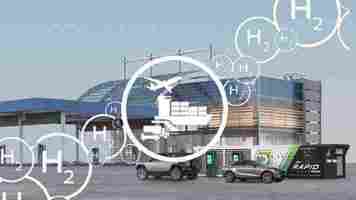
On Wednesday, they company announced its plans to introduce three Mobile Power Generators (MPGs), using its HYDROTEC fuel cell power cubes.
Simply put, MPGs can produce large amounts of electricity anywhere, without burning fossil fuels, or expanding a local power grid.
In the case of GM, the generators can put out power ranging from 60kW to 600kW, but what exactly will they bring to the table?
Let’s break it down:
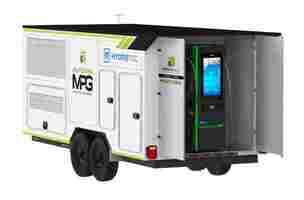

In collaboration with Renewable Innovations , GM’s planning to show off in mid-2022 an MPG-powered mobile fast-charging station for EVs.
That way, places where there’s only a temporary need for power, wouldn’t have to expand to expand the grid or permanently install charging assets.
The project was co-funded by the Michigan Economic Development Corporation and the U.S. Army, while the California Energy Commission is funding a separate program to explore how the MPGs could help provide energy during power shutdowns.
Again in partnership with Renewable Innovations, GM’s developing a mobile rapid charger, w hich could deliver fast EV charging to existing retail charging stations without the need for huge infrastructure improvements.
According to the company, the EMPOWER can fast-charge four EVs at the same time, reaching full charging within approximately 20 minutes. It could potentially juice up more than 100 electric vehicles, before the unit would need to be resupplied with hydrogen .
Renewable Innovations plans to deploy 500 EMPOWER rapid chargers across the US by the end of 2025.
GM is also designing a palletized version of the MPG that could power heavy-duty military equipment and camps.
The prototype is said to produce nearly 70% more power than traditional diesel generators, and contains features like battery backup and output regulation, which aren’t on diesel generators.
The tech is currently under evaluation by the U.S. Army Combat Capabilities Development Command Ground Vehicle Systems Center (GVSC).
GM says that, ultimately, these fuel cell generators could replace gas and diesel generators at worksites, buildings, movie sets, data centers, outdoor concerts, and festivals.
They could even back up or temporarily replace grid-sourced electricity for residential and small commercial enterprises at times of power shutdowns.
Yes, it absolutely does.
GM is already running a number of HYDROTEC projects, ranging from trucks to aerospace and locomotive, so it seems like a natural step to expand the commercial applications of its technology.
Aside from that, moving the hydrogen focus beyond transportation seems like a timely and smart move. There’s a growing demand from the entire energy sector to move to renewables and, in turn, a whole lot of market opportunities in facilitating this transition.
Algorithms can’t replace Lewis Hamilton, even if they’re faster drivers
While Lewis Hamilton and Max Verstappen were racing for the Formula 1 title over the weekend, self-driving cars were fighting for the inaugural Indy Autonomous Challenge (IAC ) championship.
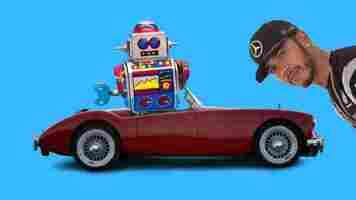
The Technical University of Munich (TUM) took the chequered flag at the iconic Indianapolis Motor Speedway. The team bagged a cool $1 million after hitting an average speed of 218 km/h on the fabled oval track.
The contest was an impressive showcase of self-driving engineering, but it didn’t convince me that AI will soon replace human race car drivers.
One reason for my skepticism is that the algorithms didn’t prove they could compete with IndyCar drivers.
Their top speeds were nowhere near the records set by humans , and they were set in time-trials when no other cars were on the track. Racing side-by-side against other vehicles would have been a far tougher test.
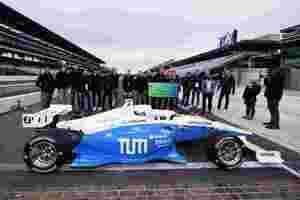

The algorithms were also prone to errors. The EuroRacing team was pipped to the title due to a coding mistake, AFP reports . Their car set the fastest lap time of the race — 223 km/h — but lost out on average speed as it had been programmed to run five laps instead of the scheduled six. The PoliMOVE team also missed a chance to win when their GPS trackers shut down on the circuit.
These technical barriers, however, could soon be overcome. Indeed, the cars were doing overtaking during practice and may have reached higher speeds if the weather had been more forgiving. A bigger challenge will be attracting viewers.
The IAC contest made for a strangely soulless spectacle. Algorithms could push racing cars to new limits, but they’ll have a harder time capturing the public’s imagination.
In Formula 1, the heated rivalry between Hamilton and Verstappen has inflamed the passions of fans. Their polarizing personalities and unpredictable behavior have incited compelling clashes both on the track and off. A competition between computers isn’t likely to have the same emotional appeal.
A bigger benefit of autonomous racing could be marketing. If self-driving cars can compete in high-speed motor races, it could reassure the public that they’re safe enough to hit regular roads. Some of the crashes at the IAC, however, could have had the opposite effect.
Greetings Humanoids! Did you know we have a newsletter all about AI? You can subscribe to it right here .
Ora’s copycat electric Beetle has a truly wild interior
Cast your mind back to last week, when images of a new electric car that looked totally like a Beetle surfaced from China.
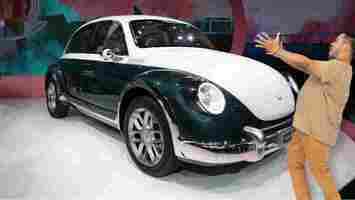
Well, that car has been officially unveiled at Auto Shanghai, and it’s great. It’s a four-door electric hatchback from Chinese EV brand Ora. It has a name now too: it’s called the Punk Cat. Maybe they should have called it the Copy Cat — oh meow!
The name was chosen following an internet consultation. Other options included Elf Cat, Noble Cat, Royal Cat, Big Orange Cat, and Persian Cat . Yeah, if you didn’t realize, Ora likes naming its cars as different types of cat. It also makes the Lightning Cat and the Good Cat.
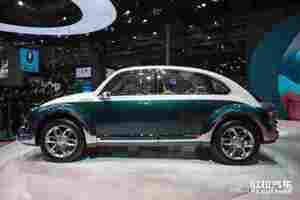

Ok, so this thing looks exactly like a classic 1960s VW Beetle. But that’s no bad thing! I said that last week when images first surfaced , and I’ll say it again. The fact this looks like a classic Beetle is no bad thing.
Sure, the likeness is undeniably brazen, but the product that Ora has come up with is just stunning.
The original Beetle was just three doors, the Punk Cat on the other hand is a slightly longer four-door take on the format, making it a tad more practical.
But the best bit of all is the car’s interior. Seriously, get a load of it:
The interior of the Punk Cat is decidedly not punk. It’s over the top, lavish, and flashy. It blends modern features like steering wheel-mounted controls, and a massive navigation screen, with classic glossy gold details, and two-tone upholstery.
It’s 100% not my style, but I love it all the same. It’s wild and different, we need more of this in the car world.
When everything goes electric, most cars will accelerate and sound largely the same, so we need to look at these kinds of details to bring out our vehicles‘ personalities.
And would you look at that: I’ve gone through this whole article without mentioning anything about batteries, motors, or range. When a car looks this good, I just don’t care.
Do EVs excite your electrons? Do ebikes get your wheels spinning? Do self-driving cars get you all charged up?
Then you need the weekly SHIFT newsletter in your life. Click here to sign up .